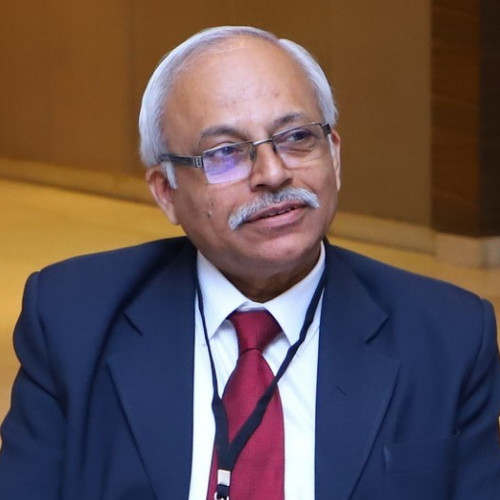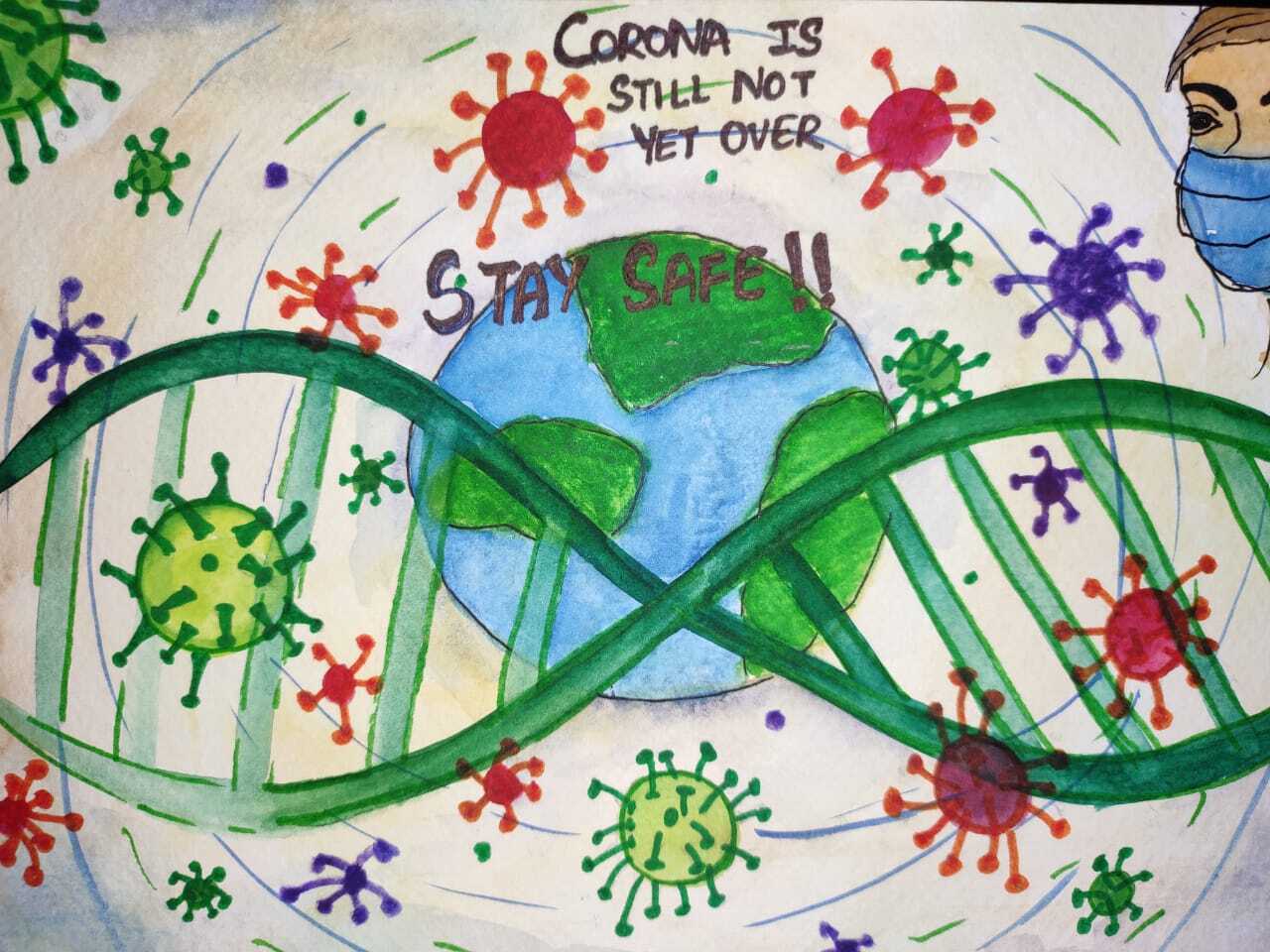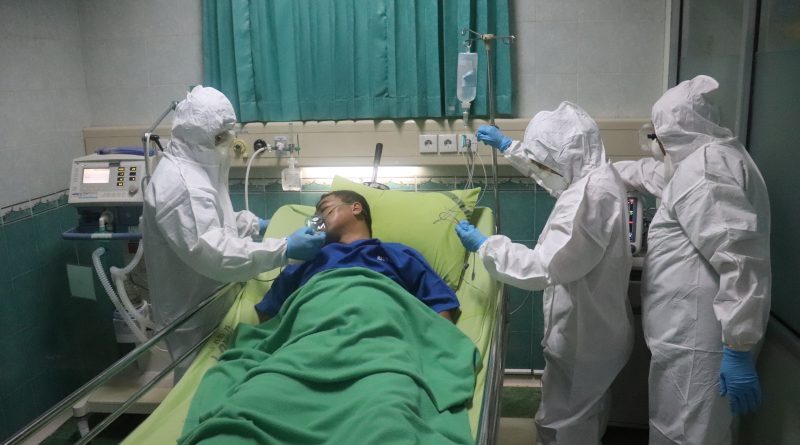Covid-19: Current Trends & Policy Implications
 The Covid-19 pandemic has turned into a seemingly unending cross country run with unexpected twists and turns. It started in Wuhan, China in December 2019. Overcoming all obstacles of lockdowns, social distancing and masks, the virus has spread from China to all parts of the globe….
The Covid-19 pandemic has turned into a seemingly unending cross country run with unexpected twists and turns. It started in Wuhan, China in December 2019. Overcoming all obstacles of lockdowns, social distancing and masks, the virus has spread from China to all parts of the globe….
By Dr Amitav Banerjee
The initial pace has slowed down but for occasional bursts of speed. From a pandemic, the dynamics of the disease seems to be settling down to an endemic state, at least in countries like India, with high population density. Sprint is sharp and short. A trotting pace is more suited for a cross country run. While the virus is in its second wind, we can take time out to adjust our strategy according to this paradigm shift. Taking stock of the ruins left in the aftermath of the initial impact of this virus can enable us to calibrate our response better.
The Early Sprint As with most new pathogens, the initial impact was severe. Many factors contribute to such phenomena. The initial strains of a pathogen are usually more virulent. As they circulate, these strains are replaced by more benign ones due to the laws of natural selection. Secondly, emerging pathogens give rise to large number of cases in short time due to low levels of population immunity – it literally runs through the population causing high morbidity and mortality. And lastly, clinicians and public health experts grope in the dark as to the best way to manage and mitigate such occurrences.
 Chaos and Anarchy in Management and Mitigation in the early days
Chaos and Anarchy in Management and Mitigation in the early days
The initial months of the pandemic were chaotic. Going by past experience of severe acute respiratory syndrome outbreaks a large number of acutely ill patients of SARS-CoV-2 were put on ventilators. Besides, a number of repurposed drugs had their moments of popularity only to be found ineffective during trials subsequently. Some of the initial mortality can be attributed to these well meaning but misguided efforts at management of individual patients. By trial and error the clinical management of patients improved and so did their survival rates. Judicious use of oxygen and steroids contributed to better outcomes.
Anarchy leading to panic influenced the initial public health response. Mathematical models predicted gloom and doom. Inputs from countries like Italy with very high death rates due to an aging and frail population grossly overestimated the impact of the virus. 2 The transmission due to contaminated surfaces was also overestimated in the early days. There were hysterical attempts to disinfect all inanimate and even animate things including humans by spraying bleach. Thankfully, transmission from contaminated surfaces was found to play a much lesser role and such drastic and obsessive measures became less frequent. Some of the most restrictive and draconian measures in public health history, such as country wide lockdowns and closure of educational institutions were adopted by most countries.
The rationale of these measures was based on computer models to “break the chain of transmission.” These models overlooked the fact that human beings are not “inert units” but are social beings difficult to insulate from their surroundings. These measures had no impact in “breaking the chain of transmission” as evidenced by the global spread with high levels of community transmission in countries with the strictest lockdowns. The Indian Covid-19 experience – An Epidemiological Enigma The enigma of Covid-19 is best illustrated by the Indian experience.
Being a large and densely populated country with different social and physical environments it is the Petri-dish for studying the epidemiology of Covid-19 with policy implications for the world. The Indian pandemic pattern illustrates textbook style the dynamics of communicable diseases epidemiology. It brings into sharp focus the interplay of the epidemiological triad of agent, host and environment. The novel agent first landed in Indian soil in late January 2020. It was brought to the state of Kerala by a young student returning from Wuhan, China. It is very likely that the infection slipped into India from other borders as well as most cases are asymptomatic and mild.
 By end of March 2020, when the number of cases in India crossed 500 and deaths from Covid-19 were 10, India clamped the strictest countrywide lockdown in the world. This knee jerk reaction was due to the global panic precipitated by highly inflated inaccurate predictions of global catastrophe due to the so called lethal virus (initial estimates of lethality were derived from hospital cases of geriatric patients in the West; an early paper in the Lancet reported fatality rate of 20%). Besides, the authorities and their scientific advisers, without taking into account our demography, underestimated the silent transmission potential of the virus. They “overestimated the lethality” and “underestimated the transmissibility” of SARS-CoV-2. This bias still persists in spite of hard evidence to the contrary. Subsequent, population level serosurveys revealed that the virus runs through populations silently, the bulk of the infections being asymptomatic.
By end of March 2020, when the number of cases in India crossed 500 and deaths from Covid-19 were 10, India clamped the strictest countrywide lockdown in the world. This knee jerk reaction was due to the global panic precipitated by highly inflated inaccurate predictions of global catastrophe due to the so called lethal virus (initial estimates of lethality were derived from hospital cases of geriatric patients in the West; an early paper in the Lancet reported fatality rate of 20%). Besides, the authorities and their scientific advisers, without taking into account our demography, underestimated the silent transmission potential of the virus. They “overestimated the lethality” and “underestimated the transmissibility” of SARS-CoV-2. This bias still persists in spite of hard evidence to the contrary. Subsequent, population level serosurveys revealed that the virus runs through populations silently, the bulk of the infections being asymptomatic.
This refined the infection fatality rate of the novel corona virus to less than 0.1% in India, many times lower than most of our endemic diseases. Did the restrictive measures work? India experienced two major waves, first between April and November 2020 and the second from February 2021 to June 2021. Paradoxically these were during the lockdown periods. On the other hand, during unlocking phases, first between November 2020 to February 2021 and subsequently after June 2021, the incidence kept on plummeting. What explains these perplexing phenomena? The first wave peaked around September 2020 touching a daily tally or about 1 lakh cases and 1200 deaths. After this first wave the countrywide serosurvey by the Indian Council of Medical Research (ICMR) indicated that 21% of the population had encountered the infection. Obviously, the lockdowns did not work. What caused the unexpected and vicious second wave? March 2021 onwards, cases spiked sharply and also more importantly, deaths. In record time cases peaked around first week of May 2021 recording 4 lakhs cases in a day.
The cracks in our public health structure were laid bare. There were crises of beds, and more importantly, oxygen. Just when all predicted complete collapse, the cases started declining as rapidly as they had shot up. By end of May 2021 it halved to around 2 lakhs per day. Presently it is between 40, 000 daily cases with around 500 daily deaths. What is the explanation for the unexpected twists and turns?
The role of vaccination when the peak declined sharply around end of May 2021 is minimal. Only 3.5% of our population was vaccinated at that point of time, far less than most countries which are struggling with far higher vaccination coverage. Iceland and Israel are experiencing spikes in spite of vaccination coverage of over 60-70% of their population. Basics of immunology and epidemiology can provide some answers. The pandemic is unfolding according to the classic dynamics of communicable diseases epidemiology, intercepted by restrictive measures such as lockdowns.
At the end of the first wave, according to the ICMR survey about 21% of our population had IgG antibodies against the SARS-CoV-2. They were mostly the working class at the lower socioeconomic spectrum, mostly living in slums and tenements as exemplified by the Dharavi experience of Mumbai and the slums of Pune, in Maharashtra, the hotspots of the Indian corona experience. In some of these pockets, the sero positivity reached 70-80% according to our study in Pune. The experience of the more affluent middle and upper classes comprising more than 70% of the population was different during the first wave. They could afford to work from home and meticulously follow “covid appropriate behaviour,” effective in the short term but difficult to sustain indefinitely. The first wave subsided due to these two factors, herd immunity among the lower classes and “covid appropriate- behaviour” among the privileged – however, the latter was left vulnerable and contributed the critical mass for the second wave.
Lulled into lowering their guard, they started mixing and participating in all social gatherings. The second wave ran through this vulnerable mass like wildfire facilitated by the highly transmissible delta variant. While overwhelming the hospital services, the wide circulation of this variant which according to some estimates can reach 30 times the detected cases brought about high population level immunity which sharply put the brakes on the second wave. This was confirmed by the fourth round of serosurvey by ICMR at the end of the second wave where the IgG levels was detected in 67% of the population.
The children were found equally to have experienced natural infection putting into question the rationale of closure of educational institutions. Will we have a third wave and the policy implications? Given this level of herd immunity across all age groups, the likelihood of an impactful third wave is negligible irrespective of the vaccination coverage of our population. In densely populated countries like India, natural infection contribute more towards herd immunity vis-s-vis mass vaccination, given the logistics and challenges of such a gigantic operation.
Moreover, recent reports of surges from countries like Iceland, Israel and to some extent from UK with very high rates of population vaccination should raise the question whether to go for mass or focused vaccination of vulnerable groups. Given the high level of herd immunity in our population and with recent research reports bringing out that natural infection confers long lasting and robust immunity against re-infections we can go for focused vaccination of vulnerable instead of mass vaccination. States like Kerala which checked the transmission in the early part of the pandemic are facing rising incidence when countrywide rates are falling. This is due to lower herd immunity in the state in the state due to interrupted transmission earlier on. One cannot prevent the full cross country run of the virus, one can only postpone it.
Conclusion
Policy should be guided by epidemiology. It is established that severity is hundredfold in the frail elderly and those with co-morbidities while the healthy and young usually have asymptomatic to mild infections. Children rarely suffer because of good immunity due to an active thymus gland, high melatonin levels and paucity of ACE receptors. Data from Sweden which kept the schools open throughout the pandemic also support this – no excess morbidity or mortality in children or school teachers were recorded, neither the schools precipitated community transmission. Given these dynamics it would be logical to go for focused protection of the vulnerable by vaccination instead of closing businesses and educational institutions and putting the whole population in quarantine with its collateral harms. Given the countrywide community transmission it also makes no epidemiological sense for aggressive testing and contact tracing or requirement of negative RT-PCR reports for inter-state travel.
(The author is Professor and Head, Department of Community Medicine, Dr D Y Patel Medical College, Hospital and Research Centre, Pune)

